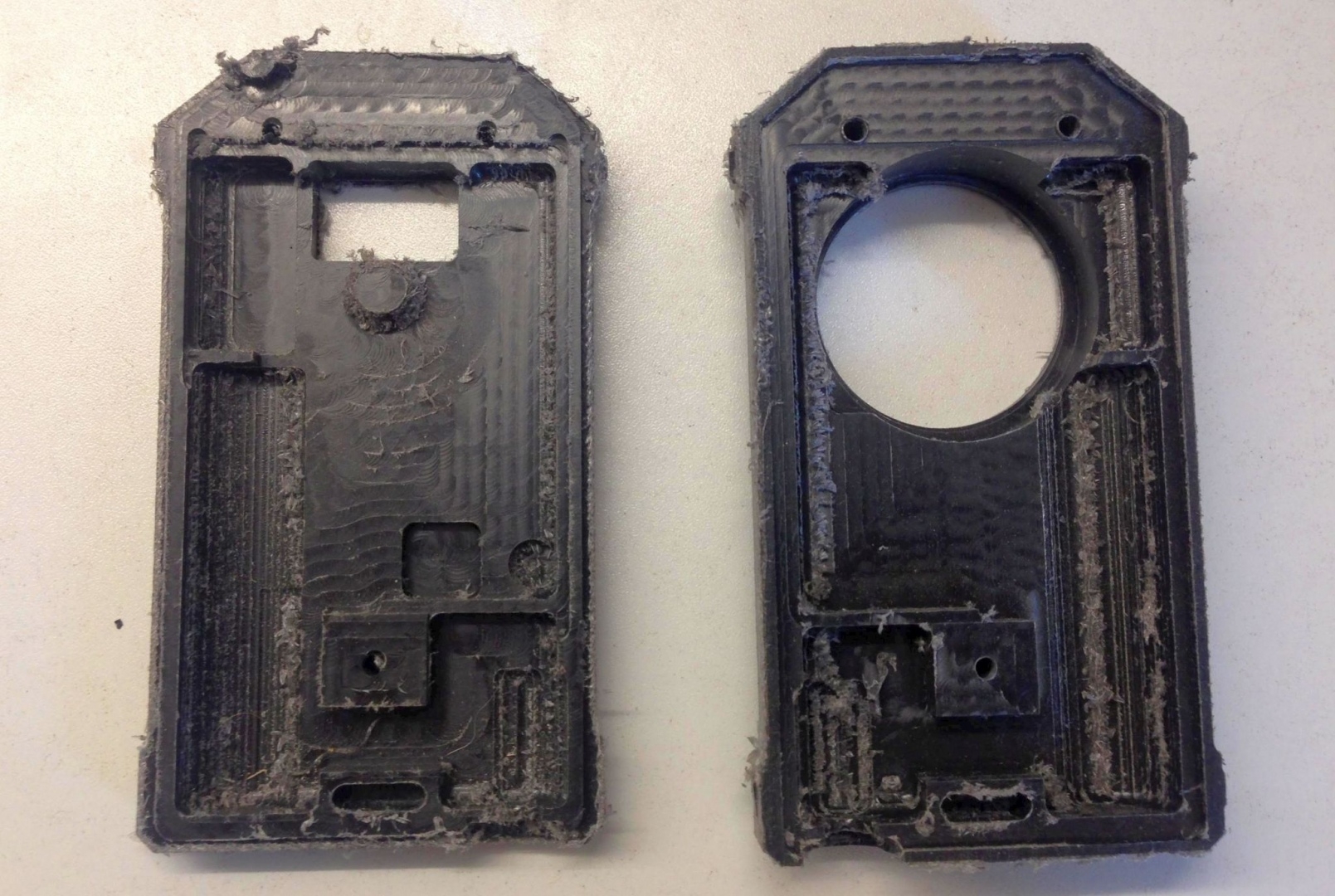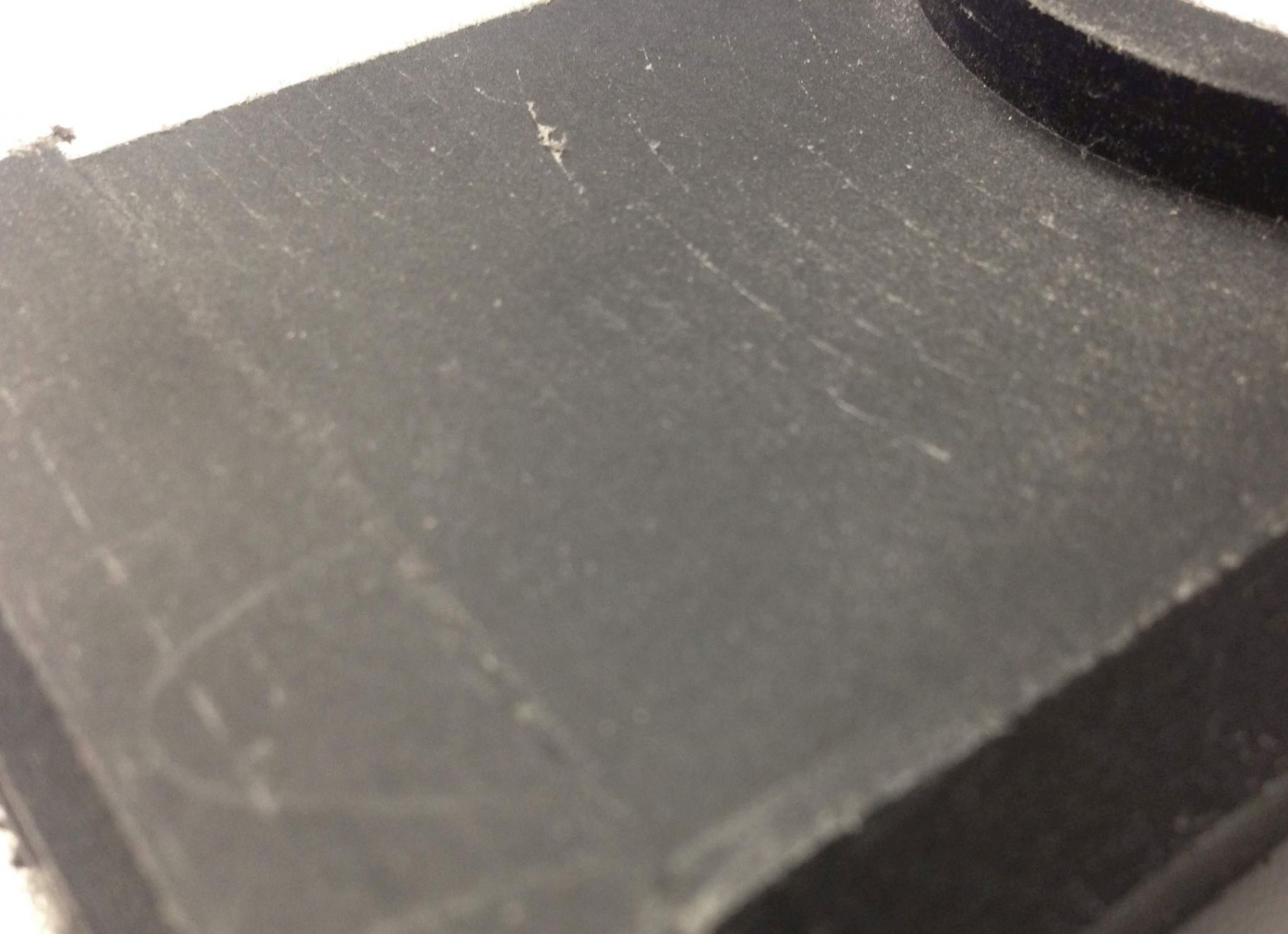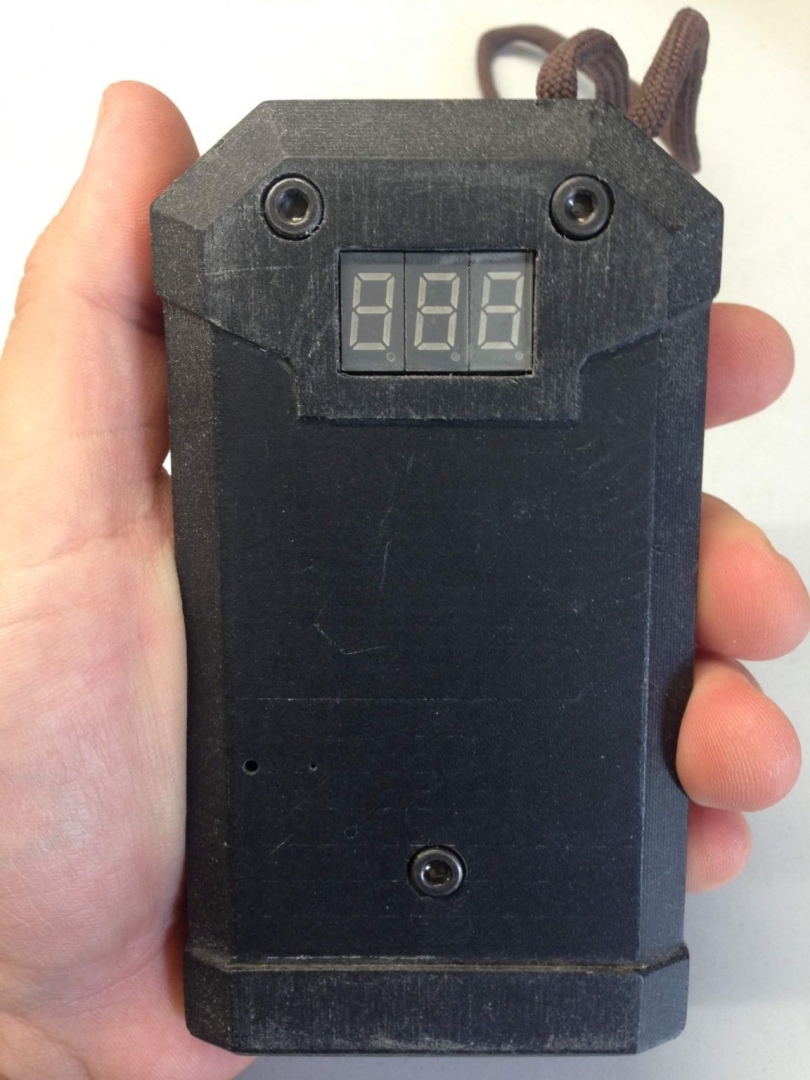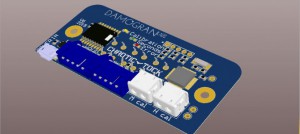Here is a reason why we used Cene the CNC for plastic milling. And here are few tips and tricks for CNCing plastics, in our case polyethylene:
- Use the sharpest drills you can find.
Similar to milling aluminum, plastics tend to melt and stick on blunt bits and drills. Very important. We used all, 2, 3 and 4 flute drills (dia: 3 – 5 mm) @ ~8000 rpm with no problems, as long as they were sharp. - Blow heavily!
Plastics chips should be removed – blown away – as soon as possible and milling bit should not mill over previously cut chips. Any melted plastics on a drill can be very bad for overheating and fast-rotating acumulated material on a bit can cause damage later on when deeper parts are milled. - Let it move fast.
We pushed our Cene the CNC to the limits, that is 900mm/min (quite low due to an old PC setup). Smallers chips melt faster, which is bad. Also, time = money 🙂
You can easily mill 3 mm deep for rough operations and 1 mm or so for finish. - Overlap a little bit more.
Usually we set our code overlap a small portion of drill size, about 20%. For plastic leave a bit more to minimalise work afterwards (cleaning unwanted melted plastic leftowers – small but sticky). - Drill and peck holes.
If possible, use usual hand drill bits for holes, not milling cutters. If this is not possible, avoid melting plastic with pecking . - Fix material as you would fix a metal workpiece.
We made a classic mistake thinking there are much smaller forces involved, so yeah, 2 screws are enough. Nope. Since we mill plastics faster and with greater depths, forces can be quite large even with softer materials as plastics. - Threaded holes in plastic?
If holes are deep enough (I would say around 1.5 times the drill diameter), threaded holes are good enough for metric screws that are not frequently screwed and if forces are not large. Otherwise, keep calm and use a hex nut on the other side.
“I did everything as you said and I still get many leftovers”:
Yes, milling plastic is not simple. Probably the most important thing is a sharp drill and good chip removing. In our case, these flashlights had to be really nice, so we first ground them by hand, then we sent them to soft sandblasting which made plastic surface really nice. A lot of work, but this is what it takes to properly mill things out of bare plastics.







